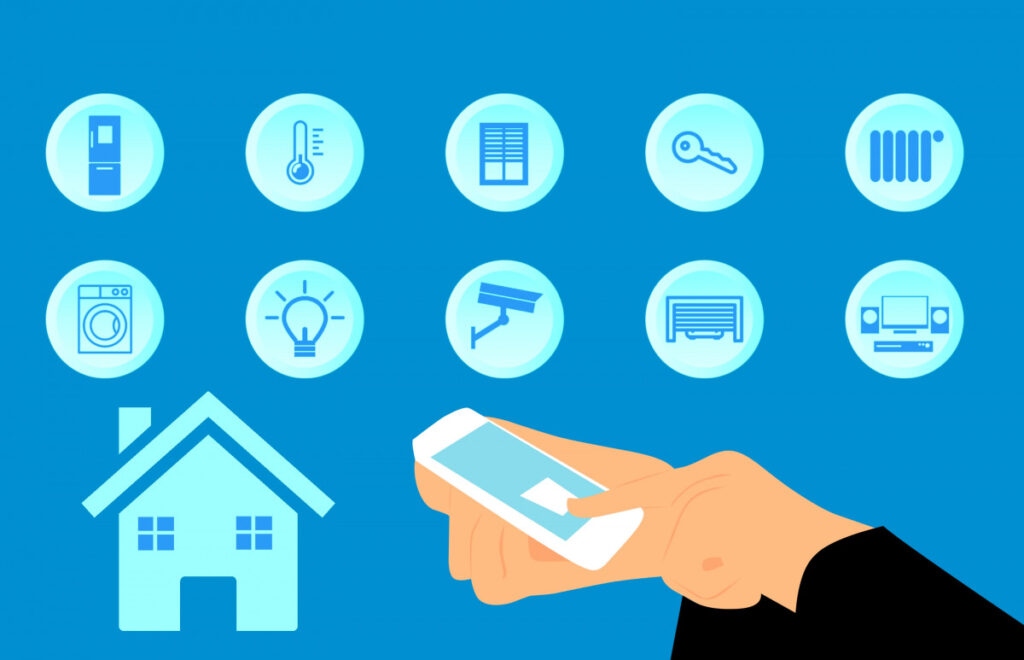A smart home: what is it?
Imagine living in a house where your lights change to match your mood, your temperature adjusts itself when you start to feel chilly, and your coffee maker starts preparing your morning brew as soon as your alarm goes off. Welcome to the smart home, and welcome to the future!
How does technology for smart homes operate?
Connecting gadgets and appliances to a central hub or your smartphone is the foundation of smart home technology. It’s like to having a digital butler at your disposal. These devices connect with one another over Wi-Fi, Bluetooth, or other wireless protocols, whether it be for voice commands or app controls. They resemble a group of superheroes, but they don’t wear capes (unless you want a smart speaker that wears one, of course).
Examples of smart home technologies
The possibilities are endless in the smart home realm. You’ve got your smart thermostats, security cameras, voice-activated assistants, and even fridges that tell you when your milk’s about to turn sour. Want to water your plants remotely? You can do that too! Your home is no longer just bricks and mortar; it’s a tech-savvy paradise.

Smart home pros and cons
Pros:
Convenience: Living in a smart house is more convenient. You can change the lighting, temperature, security, and more of a variety of devices using voice commands or a smartphone app.
Energy Efficiency: Smart appliances, lighting, and thermostats are frequently made to be energy-efficient. They can pick up on your routines and preferences, optimizing energy use and perhaps even cutting down on utility costs.
Enhanced Security: Smart home security systems offer remote access, real-time warnings, and monitoring. Smart locks, cameras, and doorbells are features that increase home security and offer comfort.
Customization: Smart homes provide a lot of customization options. To suit your particular requirements and preferences, you can design automation processes, establish timetables, and modify device settings.
Remote Access: You can keep an eye on and manage your house while you’re gone thanks to remote access capabilities. Changing settings, reviewing security cameras, or getting warnings about unusual activity are all made possible with this.
Integration: is made possible by the fact that many smart gadgets are mutually interoperable. For instance, you may create “scenes” that coordinate the actions of several gadgets, such as lowering the lights, adjusting the thermostat, and turning on music when you say “movie night.”
Entertainment: Home automation systems can improve entertainment. To enhance the immersive experience, you may use voice commands to play music, stream films, or operate your home theater system.
Cons:
Cost: The cost of smart home equipment varies. The first expenditure covers the cost of installing the hubs and buying the devices. You could eventually need to repair or update your equipment.
Technical Problems: Smart devices, like any technology, can run into compatibility issues or other technical hiccups. In this case, customer help or troubleshooting may be necessary.
Privacy: Privacy difficulties are prompted by the connectivity of smart devices. Particularly when it comes to technology that has microphones and cameras, some individuals are concerned about data collecting and potential breaches.
Complexity: Especially for people who are less tech-savvy, setting up and customizing a smart home can be challenging. It might be necessary for you to learn how to use apps, build automated procedures, and resolve problems.
Upgrades and Compatibility: To ensure security and operation, smart gadgets frequently need firmware upgrades. It can be tedious to keep everything current, and older gadgets might become incompatible with more modern hardware.
Hacking Risk: Hacking is a possibility with any internet-connected gadget. It’s crucial to use security measures like strong passwords and frequent firmware updates.
Over-automation: In some situations, relying too much on automation can result in the loss of manual skills or a disengagement from the practical aspects of managing a home.
Creating a smart home
A smart home is surprisingly simple to set up. Start with a hub or smart speaker, then connect appropriate devices and adhere to the simple directions. You’ll soon have a house that is more intelligent than Fluffy, your neighbor’s cat (no offense, Fluffy).
The origins of the smart home
When the idea of automating household chores first gained traction in the 1960s, the idea of a “smart home” was born. It transformed from clumsy experiments to slick, integrated systems throughout the years. Comparable like upgrading from a flip phone to a smartphone, but with somewhat less snake game play and much more home automation.
Let’s now add a pinch of comedy to this high-tech concoction. Imagine this: Your voice-activated assistant starts misinterpreting your commands when you’re curled up on the couch. It starts reading you the most recent financial market information instead of playing your favorite tune. Or perhaps your smart lights decide to hold a disco party in the middle of the night as a result of mistaking your dancing for a car’s headlights.
In conclusion, living in a smart house is like living in a science fiction film, but with more comforts and fewer invaders. Technology is at your disposal in today’s society, despite the fact that it occasionally thinks for itself. As a result, embrace the future while keeping a watch on your smart toaster since you never know when it might start making toast art or telling jokes.
To read more about smart devices check below links,
Read more above Amazon Echo on WikiPedia
Click on below links to know more about Amazon Echo
Link 1: Amazon Echo Dot 5th Gen Review
Link 2: Amazon Echo Dot 4th Gen Review
Link 3: Amazon Echo Dot 3rd Gen Review
Link 4: Select An In-Depth Review of the Amazon Echo Dot 2nd Generation

